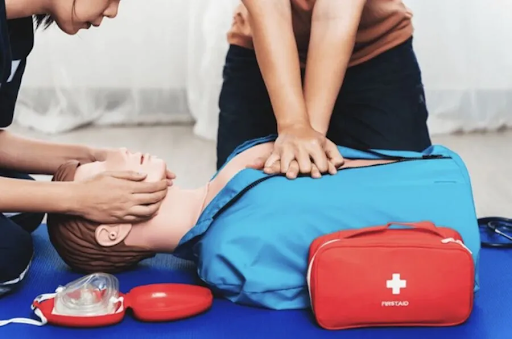First aid training is more than just a set of skills; it’s a vital aspect of personal safety and preparedness. Whether you’re a parent, a caregiver, or a professional, knowing how to respond in emergencies can make a significant difference in critical situations. One comprehensive course that stands out is HLTAID009, which equips individuals with essential first-aid skills. This guide explores why first aid training should be a priority for everyone and highlights the benefits of the HLTAID009 course.
The Importance of First Aid Training
Life-Saving Skills
First aid training provides you with the knowledge and skills to respond effectively in emergency situations. From performing CPR to treating wounds and burns, these skills can be crucial in saving lives and preventing serious injuries. Knowing how to administer first aid can make a critical difference while waiting for professional medical help to arrive.
Enhanced Safety Awareness
Understanding basic first aid principles helps you become more aware of potential hazards and safety measures in your environment. This heightened awareness contributes to a safer community, as trained individuals can identify and address risks more effectively.
Building Confidence
Having first aid training boosts your confidence in handling emergencies. Whether you’re dealing with a minor injury or a more serious medical situation, being prepared allows you to act calmly and effectively, reducing stress and increasing the chances of a positive outcome.
HLTAID009: A Comprehensive First Aid Course
Course Overview
HLTAID009, also known as Provide First Aid, is a nationally recognised course that covers a wide range of first aid skills. This course includes practical and theoretical components, ensuring participants gain a thorough understanding of emergency response techniques.
Key Components
- CPR and Resuscitation: Learn the correct techniques for performing CPR on adults, children, and infants.
- Wound Care: Understand how to manage different types of wounds, including cuts, abrasions, and burns.
- Medical Emergencies: Gain skills in responding to medical emergencies such as asthma attacks, allergic reactions, and seizures.
- Injury Management: Learn how to handle fractures, sprains, and other injuries until professional medical help arrives.
Practical Application
The HLTAID009 course emphasises hands-on practice, allowing participants to apply their knowledge in simulated emergency scenarios. This practical approach ensures that learners are well-prepared to handle real-life situations confidently.
Benefits of First Aid Training
For Individuals
- Preparedness: Being trained in first aid means you’re ready to respond effectively in emergencies, whether at home, work, or in public spaces.
- Peace of Mind: Knowing that you have the skills to assist in critical situations provides peace of mind and a sense of responsibility.
- Personal Development: First aid training enhances your problem-solving skills and ability to remain calm under pressure.
For Communities
- Safety and Well-Being: Communities benefit from having more trained individuals who can provide immediate assistance in emergencies, contributing to overall safety and well-being.
- Emergency Readiness: Increased first aid training among community members ensures a more prepared and resilient society capable of handling various emergencies effectively.
For Employers
- Workplace Safety: Employers who invest in first aid training for their staff create a safer work environment and demonstrate a commitment to employee well-being.
- Compliance: Many industries require first aid training to comply with safety regulations, making it an essential part of workplace health and safety protocols.
Conclusion
First aid training, such as the HLTAID009 course, should be a priority for everyone due to its life-saving potential and its role in enhancing safety awareness and confidence. By gaining first aid skills, you not only equip yourself to handle emergencies effectively but also contribute to a safer community. Investing in first aid training is a proactive step towards personal and collective safety, ensuring that you’re prepared to respond to emergencies with knowledge and confidence.



